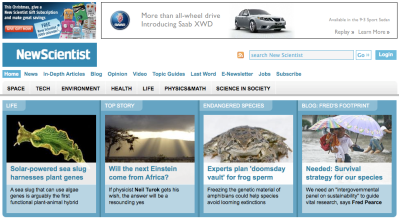It’s shameless plug time: January is approaching (no, really), and with it another term of courses in the Magazine Publishing program at Ryerson University. My class (Creating Website Editorial) is offered in January and February (it’s just seven weeks long, not a big commitment but packed with useful information), and of course I’d love for you to take it, but there are lots of other excellent classes starting in January:
• The Business of Magazine Publishing with D.B. Scott
• Introduction to Magazine Design with Jayne Finn
• Magazine Writing with Margaret Webb
• Advanced Magazine Writing with David Hayes
• Magazine Copy Editing with Bernadette Kuncevicius
• Editing Service Journalism with Doug O’Neill
Just remember, if you’re thinking of taking a class, the earlier you sign up, the better – sometimes classes get cancelled because of low enrollment, and no one knows you plan to take it unless you actually register.
Shameless plug over: we’ll return to our regular programming now.




